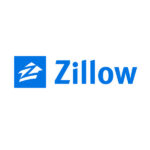
What is an ECF Notice Management System?
Electronic Court Filing (ECF) notice management is the use of technology to receive, store, and distribute state and federal ECF notices and the documents linked to those notices. Some systems also support the processing of electronic images of paper notices captured using a document scanner. The notices may originate from courts, third-party vendors, opposing counsel, or government agencies.
ECF notice management typically involves the following: use of multiple firm resources to connect a case to an internal client and matter number; download each document associated with the notice (potentially tens or hundreds of documents per notice); profile and store each document in the document management system; determine relevant parties to be notified; distribute the notice and associated documents; update the docketing staff or calendaring system; and record any costs in the time and billing system. Firm resources include staff time to capture notices and manage workflow, as well as document repositories (including file systems and document management systems) and data sources (such as case management systems and time and billing systems).
An ECF Notice Management System (NMS) automates notice management, imposing control and governance capabilities onto an otherwise ad-hoc process. An NMS allows firms to manage notices in a consistent and less labor-intensive manner. Key features of an NMS include:
- Parsing of the ECF notice to identify the court case number and jurisdiction or agency
- Downloading of documents that are attached or linked to the notice
- Profiling the documents in accordance with a firm’s policies using standard naming conventions
- Storing the documents in the document management system and/or other repositories
- Notifying interested parties inside the organization
- Alerting administrators when notices are not read or fail to meet other criteria
- Recording processing metrics
Additional features of an advanced NMS include:
- Handling of both state and federal ECF notices
- Ability to securely process documents under seal
- Providing a customizable dashboard that allows insights into the firm’s ECF notice workflow
As ECF notice management technology emerged from the transition from paper to electronic filing, most NMS platforms today are directed to processing emails received from one or more specific court systems. Given that there are still many court systems and government agencies that still use or allow paper filing, an NMS may also provide a means to process paper documents, typically by scanning and emailing a document to the NMS.
What are the benefits of an ECF Notice Management System?
- Enhanced Speed and Efficiency
An NMS creates efficiency by automating repetitive manual tasks while providing the flexibility to maintain firm rules and culture. ECF notices are processed within seconds of receipt, instead of the hours or days it may take with manual processing due to staffing variability or workflow overload. An NMS reduces the cost of processing electronic court notices by an average of 93%. Mundane and boring tasks are taken off the plates of legal assistants, paralegals, associates, and docketing clerks, reducing the overall amount of firm time wasted on non-billable activities. Another benefit of an NMS is the elimination of charges for duplicative Pacer downloads, saving firms a significant amount of unnecessary expense.
- Reduced Risk and Increased Consistency
An ECF Notice Management System reduces law firm risk by automating the processing of ECF notices, eliminating delays and human error that may critically limit the time available for the firm to respond to a notice. Attorneys and other timekeepers receive notifications and documents in a consistent format according to firm, practice group, or attorney preferences. An NMS will help reduce the need for late night fire drills because an ECF notice went unnoticed until the last minute.
- Improved Control and Visibility
An ECF Notice Management System improves control by providing flexible, firm-defined policies for profiling and storing documents in the DMS, as well as other repositories in the firm, ensuring documents are always processed correctly. A dashboard with customizable metrics empowers managers to make informed staff sizing and workload distribution decisions, while alerts enable administrators to implement and enforce consistent firmwide workflows.
Firms can also gain visibility by sending 100% of their ECF notices to an NMS to identify new cases and other information that may be hiding in attorney inboxes. This makes sure nothing slips through the cracks, as will sometimes occur in current systems that require manual handling.
Conclusion
As ECF notices continue to skyrocket in number, law firms are seeing the need to reduce the associated risks and improve staff productivity. It no longer makes sense for law firms to manually process ECF notices when the same tasks, that take highly skilled staff 15-30 minutes per notice, can be performed by an ECF Notice Management System in seconds at a fraction of the cost. An NMS will process ECF notices 24 hours a day and consistently apply firm policies to every document and notice. In the coming years, court systems across the country will continue their inevitable transition to electronic filing because of the efficiencies and risk mitigation it brings to legal practice. Should not law firms implement ECF Notice Management Systems for the same reasons?
Products and services discussed in the technology column do not constitute or imply the endorsement, recommendation, or favoring of any product or service. Views and opinions expressed herein are the author’s only and are not to be attributed to NALA unless expressly stated.
About The Author
 Ted Kukorowski is a 20+ year veteran in the legal software industry. His experience includes positions at Thomson Elite, Thomson West, OpenText, and DocsCorp. Ted is currently the Director of Sales at ECFX where he helps firms understand all the benefits of the ECFX Notice Management system.
Ted Kukorowski is a 20+ year veteran in the legal software industry. His experience includes positions at Thomson Elite, Thomson West, OpenText, and DocsCorp. Ted is currently the Director of Sales at ECFX where he helps firms understand all the benefits of the ECFX Notice Management system.











